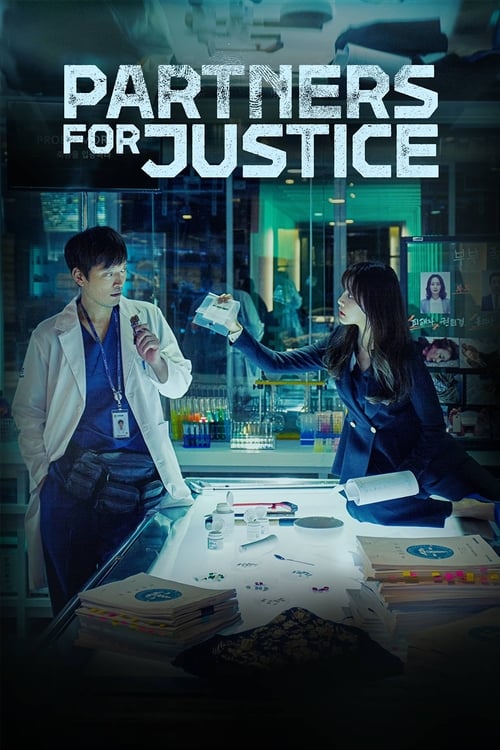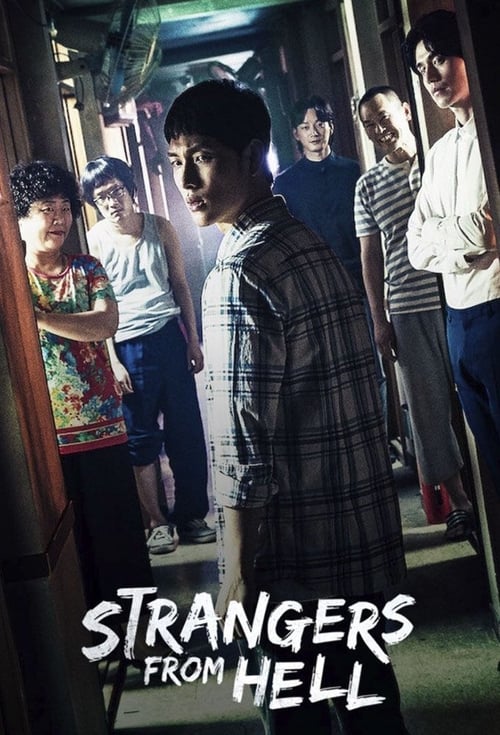
Ask Your Own Question
What is the plot?
The episode begins with a flashback to 2000, where a young girl named Lee Jae-han is seen playing with her friends in a park. The scene quickly shifts to a more somber tone as a police officer, Lee Jae-han, is shown investigating a missing person case. He is deeply affected by the case, which involves the disappearance of a young girl named Kim Seo-yeon. The emotional weight of the case is evident as Jae-han struggles with the inability to find her, showcasing his dedication to his job and the pain of unresolved cases.
The narrative then transitions to the present day, where we meet Park Hae-young, a criminal profiler who is haunted by his past. He is introduced as a man who has become disillusioned with the police force after a traumatic incident involving a case he worked on. Hae-young is shown to be deeply introspective, grappling with feelings of guilt and frustration over his inability to save victims. His character is established as someone who is passionate about justice but feels powerless in the face of systemic failures.
Hae-young receives a call about a new case involving a murder that bears similarities to the unsolved case from 2000. Intrigued, he begins to investigate, leading him to a police station where he meets the current officers handling the case. Tension arises as Hae-young clashes with the officers, who are skeptical of his methods and insights. Despite the pushback, Hae-young is determined to uncover the truth and begins to piece together clues that connect the current murder to the past.
As Hae-young delves deeper into the investigation, he discovers a mysterious walkie-talkie that seems to have a connection to the past. When he accidentally activates it, he hears a voice from 2000--it's Lee Jae-han, who is still actively investigating the case. This shocking twist reveals that Hae-young and Jae-han are communicating across time, creating a unique bond between the two men. Hae-young is initially incredulous but quickly realizes the potential of this connection to solve the cold case.
Hae-young and Jae-han begin to collaborate, sharing information about the case and piecing together the timeline of events. Jae-han provides insights from his investigation, while Hae-young offers knowledge of the current situation. Their partnership is fraught with urgency as they race against time to prevent further tragedies. Hae-young's emotional state fluctuates between hope and despair as he grapples with the implications of their communication.
As the investigation progresses, Hae-young learns about a suspect who was involved in the original case. He and Jae-han work together to gather evidence and formulate a plan to apprehend the suspect. Tension builds as they realize that the suspect is still active and poses a threat to others. Hae-young's determination to save potential victims intensifies, driving him to take risks in his pursuit of justice.
In a climactic sequence, Hae-young and Jae-han coordinate their efforts to confront the suspect. Hae-young rushes to the location where the suspect is believed to be, while Jae-han provides real-time updates from the past. The scene is charged with suspense as Hae-young navigates through the area, his heart racing as he anticipates a confrontation. When they finally come face to face with the suspect, a tense standoff ensues.
The confrontation escalates into a physical struggle, with Hae-young fighting to subdue the suspect. The scene is chaotic, filled with adrenaline and desperation as Hae-young recalls Jae-han's guidance from the past. Just as it seems that Hae-young might be overpowered, he manages to gain the upper hand, successfully apprehending the suspect. The victory is bittersweet, as Hae-young reflects on the lives that could have been saved had they been able to communicate sooner.
The episode concludes with Hae-young and Jae-han sharing a moment of triumph over the successful resolution of the case. However, the emotional toll of their experiences lingers, leaving both men to ponder the complexities of their unique connection. Hae-young is left with a sense of purpose, while Jae-han remains haunted by the unresolved cases of the past. The final scene hints at the ongoing challenges they will face as they continue to work together across time, setting the stage for future investigations.
What is the ending?
In the ending of "You're Doomed," the first episode of "Signal," Detective Park Hae-young receives a call from the past through a walkie-talkie, which connects him to a detective from 1989, Lee Jae-han. They work together to prevent a murder that has already occurred, but their efforts lead to a tragic outcome. Despite their attempts to change the past, the victim, a young girl, is still killed. The episode concludes with Hae-young feeling a deep sense of frustration and helplessness, while Jae-han is left with the burden of knowing that their actions did not alter the fate of the girl.
As the episode unfolds, we begin with Detective Park Hae-young, who is now a cold and somewhat disillusioned investigator. He is haunted by a past case that he could not solve, which sets the tone for his character's emotional state. The scene shifts to a rainy night in 1989, where Detective Lee Jae-han is introduced. He is a passionate and dedicated officer, deeply committed to his work. The contrast between the two detectives is stark; Hae-young is jaded, while Jae-han is still filled with hope and determination.
The narrative takes a pivotal turn when Hae-young discovers an old walkie-talkie that allows him to communicate with Jae-han across time. Initially skeptical, Hae-young soon realizes the potential of this connection. They share information about a case involving a missing girl, and Hae-young becomes increasingly invested in helping Jae-han prevent the tragedy that he knows is destined to occur.
As they collaborate, the tension builds. Hae-young's desperation to save the girl intensifies, and he becomes emotionally involved, pushing Jae-han to act quickly. They devise a plan to intercept the suspect, but as the clock ticks down, the situation becomes dire. Hae-young's frustration grows as he realizes that despite their best efforts, they are unable to change the course of events.
In the climactic moments, Jae-han rushes to the location where the girl is supposed to be, but he arrives too late. The scene is heart-wrenching as he discovers the aftermath of the crime. The emotional weight of failure hangs heavy in the air, and Jae-han is left grappling with the reality that their attempts to alter fate have failed.
The episode concludes with Hae-young, now back in the present, feeling a profound sense of loss and helplessness. He is left to confront the reality that some events are immutable, no matter how hard one tries to change them. Jae-han, on the other hand, is left with the burden of knowing that he could not save the girl, a haunting reminder of the limitations of their extraordinary connection.
In summary, the ending of "You're Doomed" encapsulates the struggle against fate and the emotional toll of failure, leaving both detectives with unresolved pain and a sense of urgency to continue their fight against crime, despite the challenges they face.
Is there a post-credit scene?
In the first episode of "Signal," titled "You're Doomed," there is no post-credit scene. The episode concludes without any additional scenes or content after the credits roll. The focus remains on the main narrative and character developments throughout the episode, setting the stage for the unfolding mystery and the connections between the past and present.
What is the significance of the walkie-talkie in the story?
The walkie-talkie serves as a crucial plot device that connects the present-day detective Park Hae-young with the past, specifically with the cold case detective Lee Jae-han. It symbolizes the bridge between time, allowing them to communicate and collaborate on solving a series of murders that have remained unsolved for years.
How does Park Hae-young's character develop throughout the episode?
Park Hae-young begins as a disillusioned detective, haunted by his past failures and the unsolved cases that plague him. As he discovers the ability to communicate with Lee Jae-han through the walkie-talkie, he becomes more determined and hopeful, shifting from a state of despair to one of purpose as he seeks to prevent future tragedies.
What motivates Lee Jae-han to help Park Hae-young despite the time difference?
Lee Jae-han is driven by a strong sense of justice and a desire to solve the cases that have haunted him. His motivation is compounded by the realization that he can alter the future and save lives, particularly as he learns about the impending dangers that Park Hae-young faces.
What role does the character of Cha Soo-hyun play in the episode?
Cha Soo-hyun is introduced as a capable and determined detective who works alongside Park Hae-young. She represents a grounding force in the narrative, providing support and insight as they navigate the complexities of the case. Her character also highlights the challenges faced by female detectives in a male-dominated field.
How does the episode establish the tone of suspense and urgency?
The episode establishes a tone of suspense through its pacing, the use of dark, moody cinematography, and the unfolding mystery surrounding the murders. Tension builds as Park Hae-young and Lee Jae-han race against time to prevent a crime that has already occurred, creating a palpable sense of urgency that grips the audience.
Is this family friendly?
In the first episode of "Signal," titled "You're Doomed," there are several elements that may be considered objectionable or upsetting for children or sensitive viewers:
-
Violence: The episode includes scenes depicting crime and violence, including a murder investigation. The portrayal of crime scenes may be intense and unsettling.
-
Emotional Distress: Characters experience significant emotional turmoil, including grief and fear, which may be distressing for younger viewers.
-
Themes of Abduction: The storyline involves themes of kidnapping and the potential danger to individuals, which can be frightening.
-
Police Procedural Elements: The depiction of police work and investigations may include graphic descriptions or visuals related to crime that could be disturbing.
-
Dark Atmosphere: The overall tone of the episode is tense and suspenseful, which may not be suitable for all audiences, particularly younger children.
These elements contribute to a mature narrative that may require parental discretion for younger viewers.































